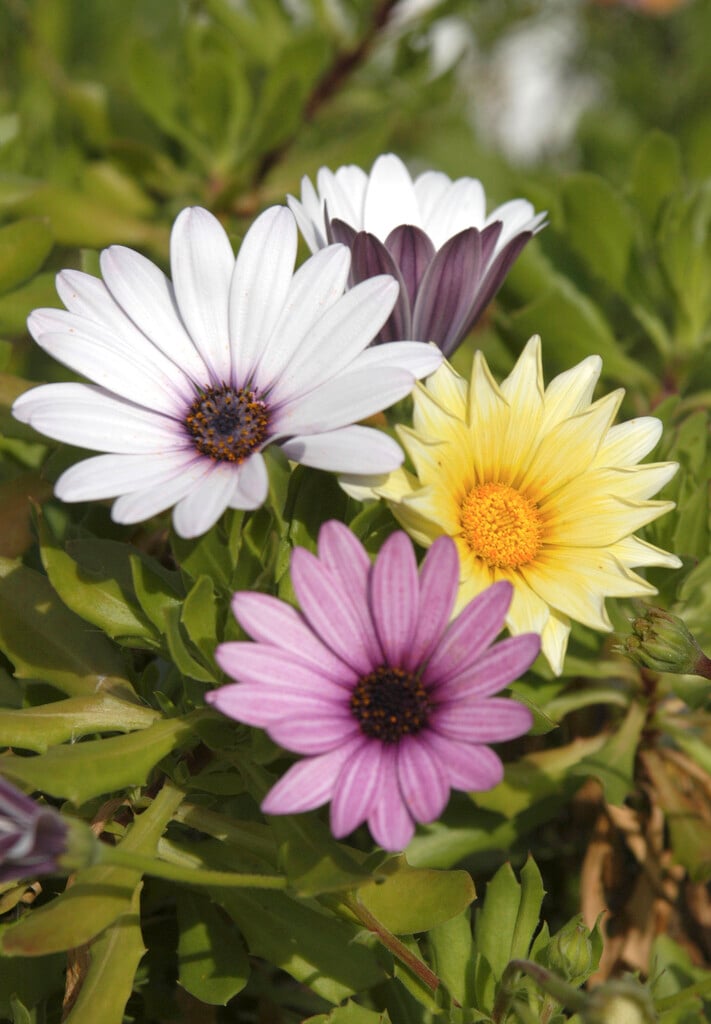Dimorphotheca pluvialis
rain daisy
An upright annual to around 40cm high, with obovate, lobed green leaves covered with tiny hairs. Daisy-like flowers to 6cm across are produced from summer to early autumn, with deep purple centres and pure white petals
Size
Ultimate height
0.1–0.5 metresTime to ultimate height
1 yearUltimate spread
0.1–0.5 metresGrowing conditions
Moisture
Well–drainedpH
Acid, Alkaline, NeutralColour & scent
| Stem | Flower | Foliage | Fruit | |
| Spring | Green | |||
|---|---|---|---|---|
| Summer | White Purple | Green | ||
| Autumn | White Purple | Green | ||
| Winter |
Position
- Full sun
Aspect
South–facing or West–facing
Exposure
ShelteredDrought resistance
Yes Hardiness
H2Botanical details
- Family
- Asteraceae
- Native to GB / Ireland
- No
- Foliage
- Deciduous
- Habit
- Bushy, Columnar upright
- Genus
Dimorhotheca can be annuals or woody-based, evergreen perennials with simple, alternate leaves and large daisy-like flower-heads in summer and autumn
- Name status
Correct
- Plant range
- S Africa, Namibia
How to grow
Cultivation
Grow in light, well-drained, fertile soil in a sheltered, sunny spot; flowers close in the evenings and in dull weather
Propagation
Propagate by seed, sown under cover in early spring and planted out after frosts, or sown in situ in mid spring
Suggested planting locations and garden types
- Cottage and informal garden
- Patio and container plants
- Gravel garden
- Flower borders and beds
- Bedding
- Wall side borders
Pruning
Deadhead to encourage more flowers
Pests
Generally pest-free
Diseases
May be susceptible to grey moulds
Get involved
The Royal Horticultural Society is the UK’s leading gardening charity. We aim to enrich everyone’s life through plants, and make the UK a greener and more beautiful place.

